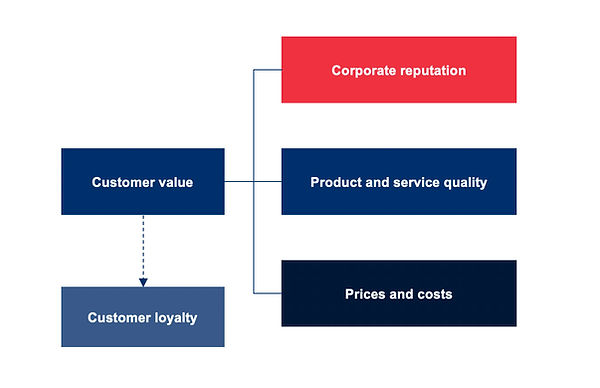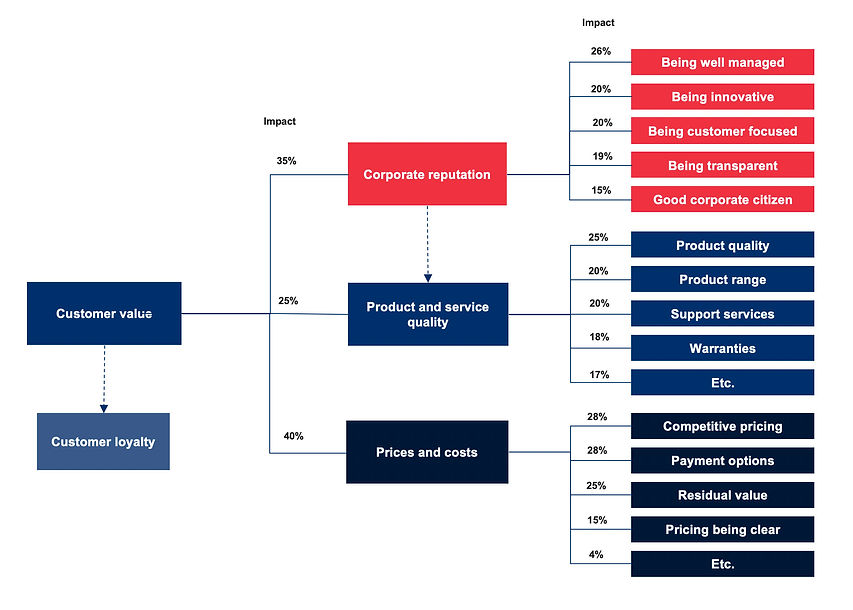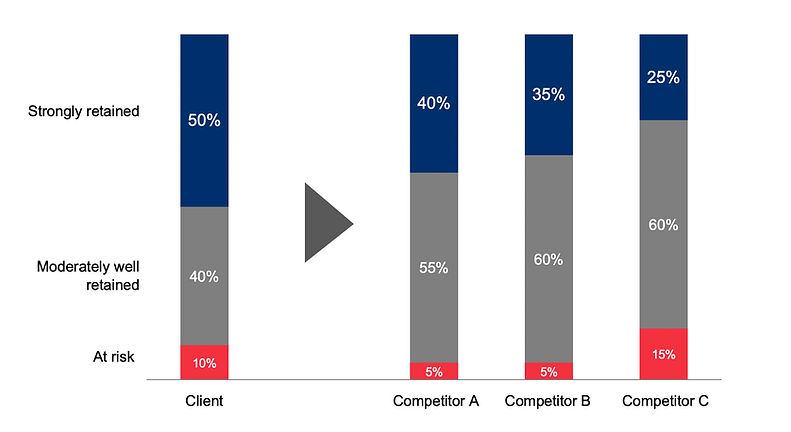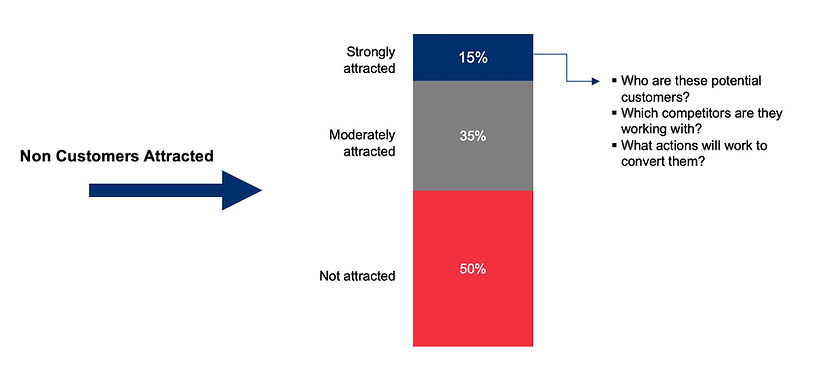Customer Loyalty
Our customer value management approach identifies actions that will strengthen the customer base and drive growth.
What is Customer Value Management?
Customer value management is a powerful business tool that is used to understand how organisations deliver value from the customers' perspective. It is widely recognised by academics that perceived customer value determines loyalty and thus is a better predictor of measures such as customer retention, share of wallet and future purchase intentions, than measures such as customer satisfaction.
How do we Help Drive Change?
To drive change, a business must understand how customers develop their perceptions of value; i.e. how they trade-off what they receive for what they pay. Value can then be improved by increasing quality, availability, service support etc., together with organisational elements relating to reputation.
Our design generates pragmatic and actionable outputs that enable organisations to understand how to manage these various elements that drive value. Specifically, we identify opportunities that will be valued by customers and determine how these should be prioritised.
What is our Approach?
We recognise that customer value incorporates notions of company reputation, functional benefits of the product or service delivered, including quality, and pricing.
The framework is made up of the core customer value and loyalty processes where customers trade-off between benefits; i.e. the quality of the goods and services they acquire and the sacrifices they make by way of costs and prices. The model also recognises that reputation has a primary and secondary influence on perceptions of product and service quality, perceptions of customer value and on customer loyalty.
This broad framework is depicted below:

How is the Framework Customised?
In order to understand the drivers of customer value, the model is expanded to reflect the various customer facing processes over which the organisation has control.
This process is customised to each client organisation and needs to be sufficiently comprehensive to include all the various elements that the organisation manages in order to deliver value. An illustrative example is provided below:

Impact weights are calculated using statistical modelling. Combining these weights with performance scores helps to identify the most profitable investments of time and resources to improve customers' perceptions of value. This consequently works to create a more loyal and committed customer base since customer value is a major determinant of loyalty. Specifically, our outputs enable improvement opportunities to be identified and prioritised.
How is Customer Loyalty Measured?
Measures assess how strongly customers are retained by the client organisation, how strongly prospects are being attracted, and the extent that existing clients are being pulled to competitors.
Measures enable customers to be classified accouring to their level of retention: strongly retained, moderately retained or 'at risk' of defection. Loyalty metrics can be used to compare performance relative to competitors.

Outputs from the loyalty analysis can also be used to assist develop strategies for growing the total customer base. We assess how strongly different groups of potential customers may be attracted and by understanding who these are and actions that will work to convert them, we can directly inform acquisition strategies.

Work with us
Contact us to start understanding how you can develop a more loyal and committed customer base.
Other areas of expertise
Managing Customer Experience
Designed to understand the drivers of satisfaction and identify actions that will improve performance
Employee Engagement
Our approach is holistic in that it considers not only engagement, but the various states of employee activation.
Market Segmentation
Achieve a competitive advantage by adopting targeted marketing strategies


